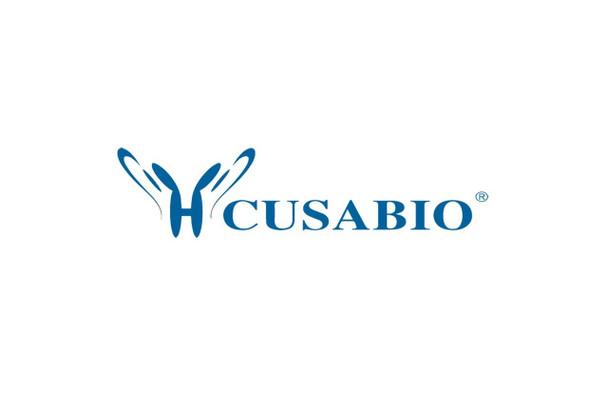Cusabio Human Recombinants
Recombinant Human N-glycosylase/DNA lyase (OGG1) | CSB-EP016313HUa2
- SKU:
- CSB-EP016313HUa2
- Availability:
- 13 - 23 Working Days
Description
Recombinant Human N-glycosylase/DNA lyase (OGG1) | CSB-EP016313HUa2 | Cusabio
Alternative Name(s): Including the following 2 domains: 8-oxoguanine DNA glycosylase (EC:3.2.2.-) DNA-(apurinic or apyrimidinic site) lyase (EC:4.2.99.18) Short name: AP lyase
Gene Names: OGG1
Research Areas: Cancer
Organism: Homo sapiens (Human)
AA Sequence: MPARALLPRRMGHRTLASTPALWASIPCPRSELRLDLVLPSGQSFRWREQSPAHWSGVLADQVWTLTQTEEQLHCTVYRGDKSQASRPTPDELEAVRKYFQLDVTLAQLYHHWGSVDSHFQEVAQKFQGVRLLRQDPIECLFSFICSSNNNIARITGMVERLCQAFGPRLIQLDDVTYHGFPSLQALAGPEVEAHLRKLGLGYRARYVSASARAILEEQGGLAWLQQLRESSYEEAHKALCILPGVGTKVADCICLMALDKPQAVPVDVHMWHIAQRDYSWHPTTSQAKGPSPQTNKELGNFFRSLWGPYAGWAQAVLFSADLRQSRHAQEPPAKRRKGSKGPEG
Source: E.coli
Tag Info: N-terminal 6xHis-SUMO-tagged
Expression Region: 1-345aa
Sequence Info: Full Length
MW: 54.8 kDa
Purity: Greater than 90% as determined by SDS-PAGE.
Relevance: DNA repair enzyme that incises DNA at 8-oxoG residues. Excises 7,8-dihydro-8-oxoguanine and 2,6-diamino-4-hydroxy-5-N-methylformamidopyrimidine (FAPY) from damaged DNA. Has a beta-lyase activity that nicks DNA 3' to the lesion.
Reference: "Cloning and characterization of mammalian 8-hydroxyguanine-specific DNA glycosylase/apurinic, apyrimidinic lyase, a functional mutM homologue."Aburatani H., Hippo Y., Ishida T., Takashima R., Matsuba C., Kodama T., Takao M., Yasui A., Yamamoto K., Asano M., Fukasawa K., Yoshinari T., Inoue H., Otsuka E., Nishimura S.Cancer Res. 57:2151-2156(1997)
Storage: The shelf life is related to many factors, storage state, buffer ingredients, storage temperature and the stability of the protein itself. Generally, the shelf life of liquid form is 6 months at -20?/-80?. The shelf life of lyophilized form is 12 months at -20?/-80?.
Notes: Repeated freezing and thawing is not recommended. Store working aliquots at 4? for up to one week.
Function: DNA repair enzyme that incises DNA at 8-oxoG residues. Excises 7,8-dihydro-8-oxoguanine and 2,6-diamino-4-hydroxy-5-N-methylformamidopyrimidine (FAPY) from damaged DNA. Has a beta-lyase activity that nicks DNA 3' to the lesion.
Involvement in disease: Renal cell carcinoma (RCC)
Subcellular Location: Nucleus, nucleoplasm, Nucleus speckle, Nucleus matrix
Protein Families: Type-1 OGG1 family
Tissue Specificity: Ubiquitous.
Paythway: DNArepairpathway
Form: Liquid or Lyophilized powder
Buffer: If the delivery form is liquid, the default storage buffer is Tris/PBS-based buffer, 5%-50% glycerol. If the delivery form is lyophilized powder, the buffer before lyophilization is Tris/PBS-based buffer, 6% Trehalose, pH 8.0.
Reconstitution: We recommend that this vial be briefly centrifuged prior to opening to bring the contents to the bottom. Please reconstitute protein in deionized sterile water to a concentration of 0.1-1.0 mg/mL.We recommend to add 5-50% of glycerol (final concentration) and aliquot for long-term storage at -20?/-80?. Our default final concentration of glycerol is 50%. Customers could use it as reference.
Uniprot ID: O15527
HGNC Database Link: HGNC
UniGene Database Link: UniGene
KEGG Database Link: KEGG
STRING Database Link: N/A
OMIM Database Link: OMIM









